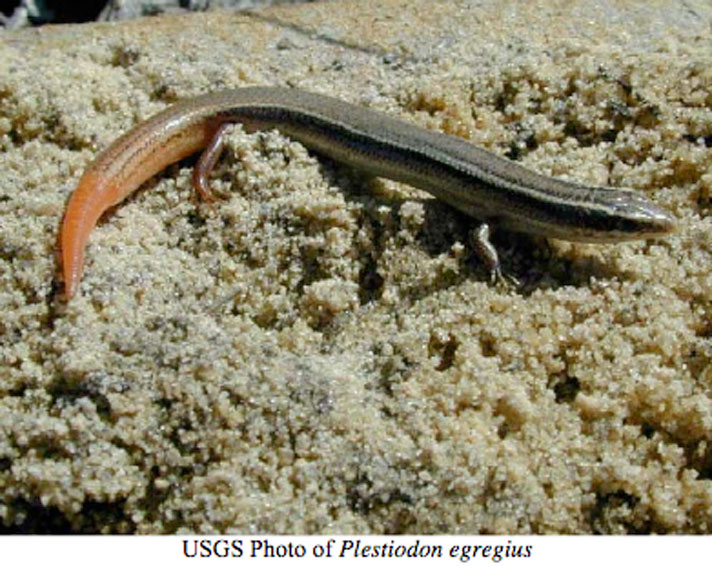The USFWS was petitioned by the Center in 2012 to protect the reptile under the Endangered Species Act.
The Center for Biological Diversity has filed a lawsuit against the U.S. Fish and Wildlife Service for not protecting the Cedar Key mole skink (Plestiodon egregius insularis), a lizard species that is known only to inhabit Cedar Key, Fla. and two other islands off Florida’s Nature Coast.

USGS
The USFWS was petitioned by the Center in 2012 to protect the reptile under the Endangered Species Act.
“This rare lizard can’t wait any longer for endangered species protections,” Elise Bennett, a Center staff attorney said in a statement released by the Center. “The remaining populations of Cedar Key mole skink are on track to blink out of existence as coastal development destroys habitat and shorelines are lost to the sea. But the Endangered Species Act could ensure the lizard’s survival.”
There are five known species of mole skink
- Florida Keys mole skink, P. e. egregius
- Cedar Key mole skink, P. e. insularis
- Bluetail mole skink, P. e. lividus
- Peninsula mole skink, P. e. onocrepis
- Northern mole skink, P. e. similis
The first three live in limited, specific areas while the last two are common.
The skink, which is found in sandhills and scrub, are known to bury themselves underground. The USFWS was petitioned by the Center in 2012 to protect the reptile under the Endangered Species Act. The USFWS determined in 2015 that protections may be warranted but failed to make a decision as to whether the skink should be protected within one year of the petition, as required by law.


